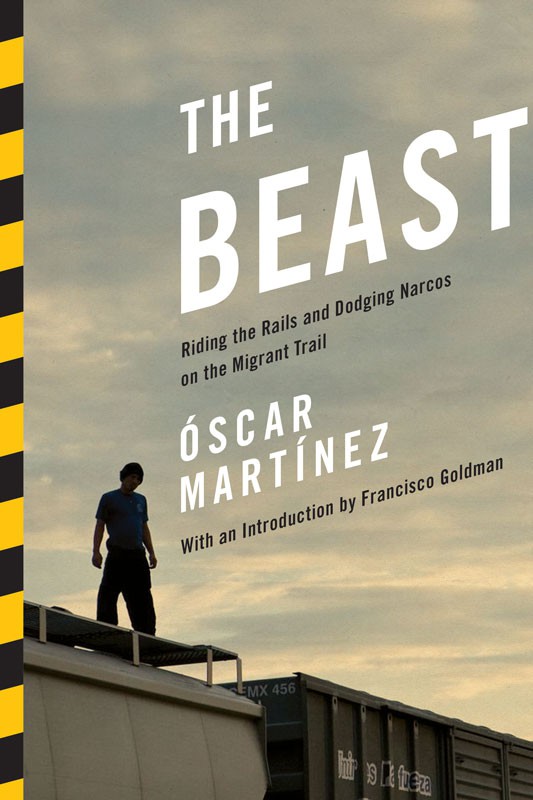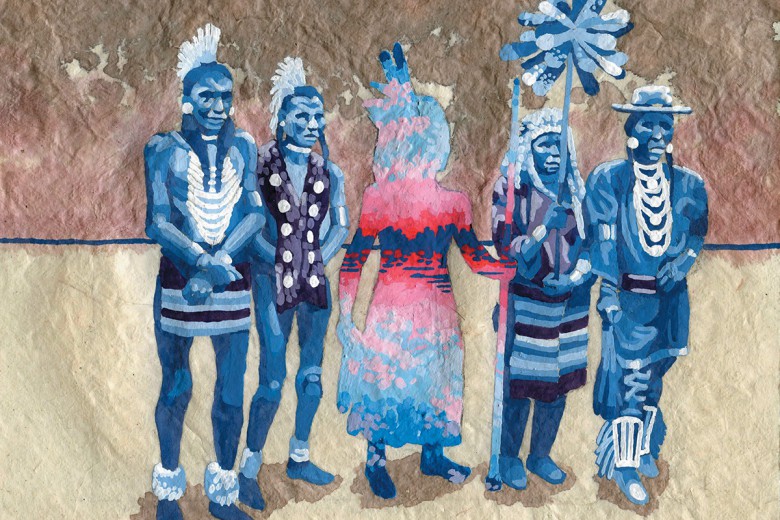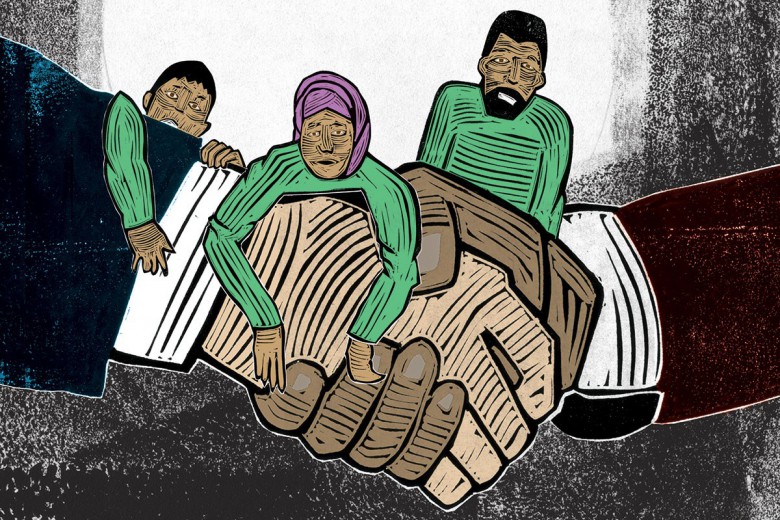
By Óscar Martínez
Published by Verso, 2013; Icaria Editorial, 2010
“On top of a train,” Salvadoran journalist Óscar Martínez observes, “there aren’t journalists and migrants, there are only people hanging on. There is nothing but speed, wind, and sometimes a hoarse conversation. The roof of the cars is the floor for all, and those who fall, fall the same way. Staying on is all that matters when The Beast, La Bestia, a popular name for the train, is on the move.”
The Beast: Riding the Rails and Dodging Narcos on the Migrant Trail, Martínez’s first book, is a harrowing account of the 3,200-kilometre journey across Mexico that hundreds of thousands of Central American migrants make each year en route to the United States. It’s a shining model of what journalism as a practice of solidarity can look like, and a must-read for anyone who believes journalism can be a tool for transforming society. The book’s virtues lie in Martínez’s unwavering commitment to documenting, first-hand, the most dangerous migrant route in the hemisphere and in the quality of his writing: observant, austere, and lyrical, yet seething with indignation beneath the cool accumulation of detail.
The pieces that would become The Beast were originally published as online dispatches for ElFaro.net, a Salvadoran publication, while Martínez was in his mid-20s. They are based on numerous trips across Mexico in 2008 and 2009 where he accompanied Central American migrants. Martínez recounts their reasons for going, the countless crimes committed against them, and the impossible choices many are forced to make along the way. Through their stories, Martínez paints a picture of courageous, audacious, and endlessly resilient people on the move, driven into the arms of the empire by economic hardship and the spiral of violence that has consumed Central America in recent years. Honduras, Guatemala, El Salvador, and Belize now have the highest murder rates in the world. The causes of this violence are no mystery: decades of structural adjustment; the Pentagon-funded civil wars of the 1970s and ’80s, which killed at least 300,000; the U.S. policy of deporting gang members (and therefore gangs) to country of origin; and the war on drugs, which has now replaced the Cold War as the prime justification for projecting imperial force in the Americas.
Whether he’s recounting the personal tragedies that drive people north; or describing the frequent accidents, assaults, and robberies atop the train; or detailing the particular struggles of migrant women, an estimated eighty per cent of whom are sexually assaulted along the route; the horrors of Martínez’s account are compounded by the terseness of their telling. At one point, Martínez accompanies three Salvadoran brothers as they pass through what was then the most dangerous section of the route, the region known as La Arrocera in Chiapas in southern Mexico. They are never sure which way will offer a path forward or whether the directions they’re given are sincere or will merely steer them into a trap.
“We’ve climbed over seven barbed-wire fences and crossed ten cattle ranches and a river. We’re on this road by recommendation of an old man we met during the first three miles of our trek. The old man warned us, though, of the danger. He said that we couldn’t blame him if we were attacked. He recommended this route in particular, he said, because it had one clear advantage – it stayed close to the highway, which meant potential help, which meant people would be able to hear our screams.”
At first, the attacks that Martínez describes are the work of small-time bandits: campesinos and day labourers who realize that the strangers passing through their towns make both easy and lucrative targets because they’re unlikely to complain to authorities. But Martínez’s dispatches bear witness to the deepening of Mexico’s militarized drug war, that blunt tool of social control that in recent years has engulfed the country in spectacular violence. Because of their vulnerability, migrants have borne the brunt of this violence, which has increasingly taken the form of mass abductions perpetrated by the Zetas cartel. “The business logic of the kidnappers is sound,” Martínez observes. “It’s more profitable to kidnap 40 people, each of whom will pay between $300 and $1,500 in ransom money, than it is to extort a local business owner who might alert the press or the police. … These are the kidnappings that don’t matter.”
First published in Spain, it took years for The Beast to find a publisher in Mexico and years more to find an English-language publisher. In the intervening years, the situation has only worsened as both drug cartels and the U.S. border patrol have metastasized, pushing migrants onto increasingly dangerous routes while the methods for controlling and profiting from their movement grow more sophisticated and more brutal. The recovery in 2011 of 192 bodies from mass graves in San Fernando, Tamaulipas, for instance, at a ranch that Martínez had investigated two years earlier as a notorious safe house for the trafficking of migrants (an investigation documented in The Beast), underscores the growing brutality of the enterprise.
More recent events have only validated Martínez’s analysis and conclusions if not yet his hope that bringing these stories to light could change things. In an interview with Latino USA, Martínez himself counsels persistence: “The work of a journalist puts light in the dark corner of societies. … Journalism is like the sea when it erodes a stone; it takes years and it is not the rhythm we’d prefer, but it is the rhythm we have.”






